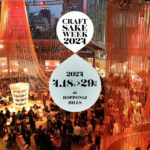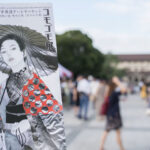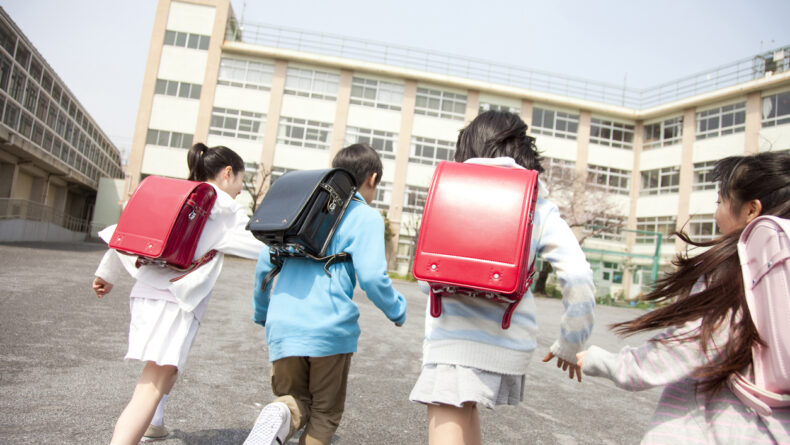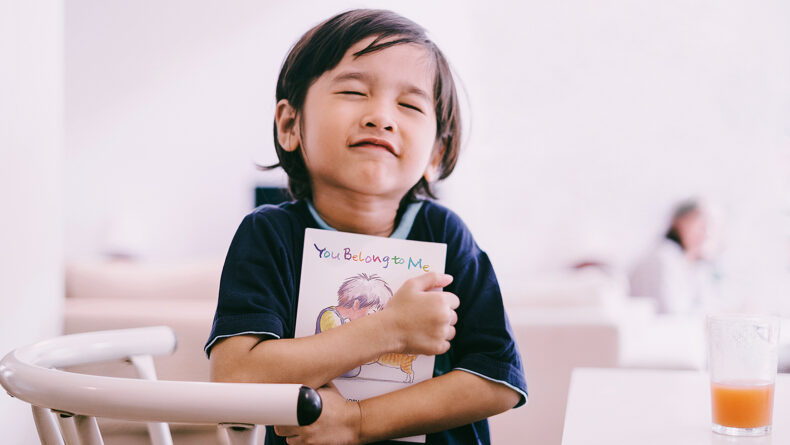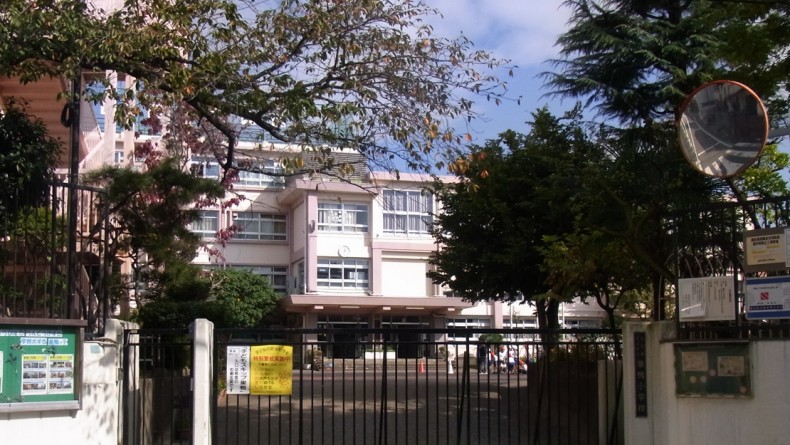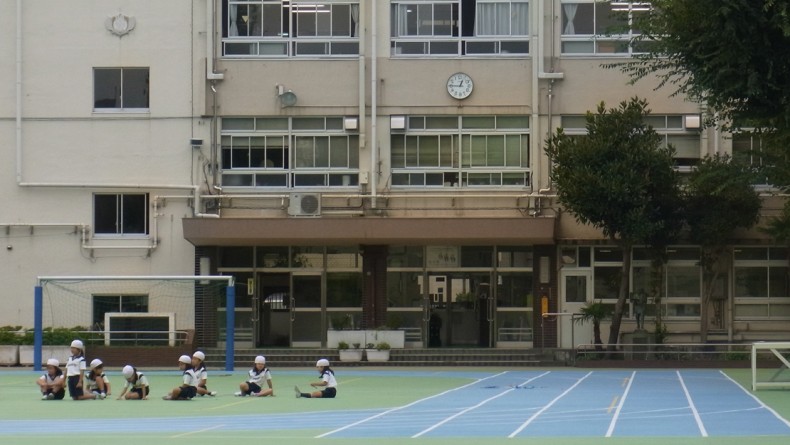Preparing to Enter a Japanese Elementary School
Lots To Organise
Although the new Japanese school year doesn’t begin until April, there’s a lot to get ready before the entrance ceremony.
If you are the parent of a soon-to-be first-year elementary student, in November you would have taken your child to the local Japanese elementary school for a health check. Probably on this day you also had a short interview with the principal or vice principal and were able to talk about any concerns you may have had.
Unless you ask for another meeting, this was probably your only scheduled opportunity for a one-on-one discussion with a teacher before your child enters the school. If you still have any specific issues that you are worried about, it is probably a good idea to contact the school and ask if you can go in and talk about them. The vice principal will probably be the best person to talk to about this. Keep in mind that most parents are nervous about their child entering school, so this is a recommendation only for children with some kind of special circumstances, such as allergies or other health issues. A lack of Japanese language skills usually isn’t the problem you may fear it to be. It will usually work out fine.
Register afterschool care
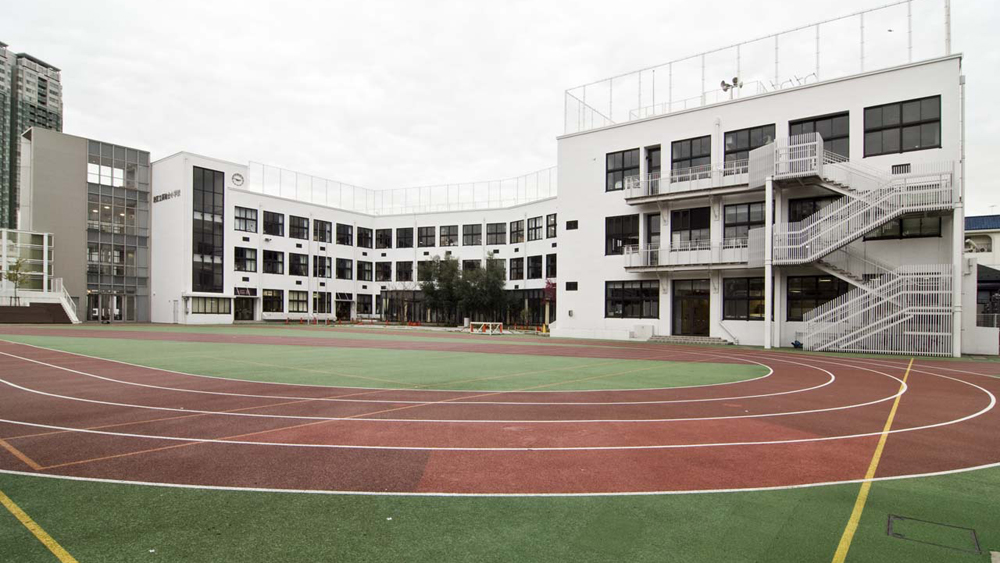 © Photo by Scarletgreen
© Photo by ScarletgreenIf you are planning to use the gakudou hoiku (registered afterschool childcare) you will have needed to register directly with that facility, with application forms likely to be available from December and due to be lodged in early January. Gakudo staff are hired by each ward to look after registered students after school and during holidays until 6 p.m., with some facilities planning to extend that to 7 p.m. in the new school year. Previously only available to children up to grade three, some are now allowing all grades to register, although priority is given to younger children. The monthly usage fee is around ¥3,000 to ¥4,000. Usage is limited to children of working parents or families of the disabled or infirm, and places fill up quickly.
The same facility and staff also serve other kids under a system with a different name and a lower level of supervision. In Toshima ward it is called “skip,” and it allows students to either come directly to the facility after school or to first go home and then come and play. Participation in this system is free and will require a very simple registration.
Elementary introduction for parents
In February the schools will hold a hogosha-kai (parents meeting) with all the parents of children who will be entering first grade in April. There you will receive details about the school, the entrance ceremony and the supplies and other belongings your child will need for school. A list of general abilities that should also be honed before entering elementary school may also be included. Items on the list include:
- Eating breakfast each day
- Being able to eat whatever is served at mealtimes (ideally within 20 minutes, which is the time set aside for eating lunch at school)
- Your child should be able to open and close an umbrella
- Go to the toilet alone
- Be able to wring dry a zoukin (cleaning cloth)
They should also be able to ask a teacher for help or for further explanation and be able to say, read and write at least their own name in hiragana. The children will study hiragana and katakana in first grade, even though most Japanese students will already know hiragana.
Getting to and from school
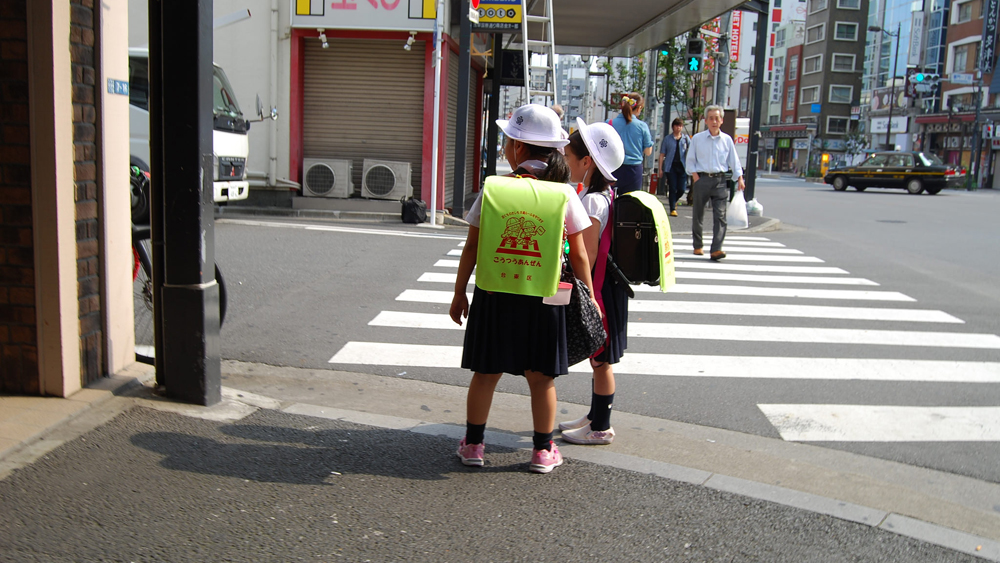 © Photo by Kkunurashima
© Photo by KkunurashimaChildren should be able to walk safely to school and home again, meaning that they know such things as the right timing to cross at traffic lights and also know to not run across the road. Parents are advised to walk the route to school with their children before the school year begins, also taking note together of the location of any kodomo hyaku-tou-ban (children’s safe houses).
What they need
Pupils will be expected to always have on them a handkerchief for drying their hands and a pocket-sized pack of tissues. Since girls’ clothing often doesn’t have pockets, keep this requirement in mind when shopping. Older girls get around this problem by wearing shorts with pockets on top of their leggings or under pocketless skirts and dresses. Another popular option is to buy or make a tsuke-pokketo (clip-on pocket).
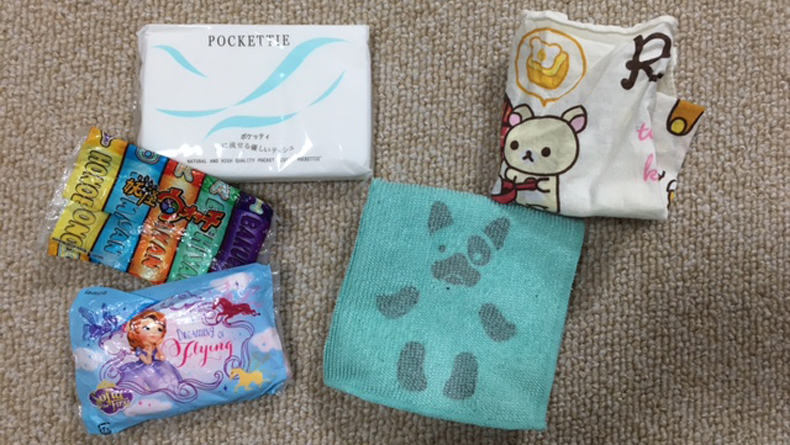
Many other items will be required, and all of them can be purchased, although you are welcome to make them yourself. You may have noticed a small, drawstring bag hanging off the school bag of an elementary school student. That is a kyuushoku-bukuro (lunch bag), which is a bag that contains items each child needs for the school lunch each day. The lunches are made at the school by staff employed solely in that role. The children serve their classmates from big pots. Consequently, the kyuushoku-bukuro contains a medical mask (the type used here when someone has a cold), a cup, a pack of tissues, a small towel, a placemat and recently maybe also a toothbrush, although no toothpaste. The placemat should be the size of the school desktop; a width of 60 centimeters and a height of 40 centimeters. You should prepare three placemats.
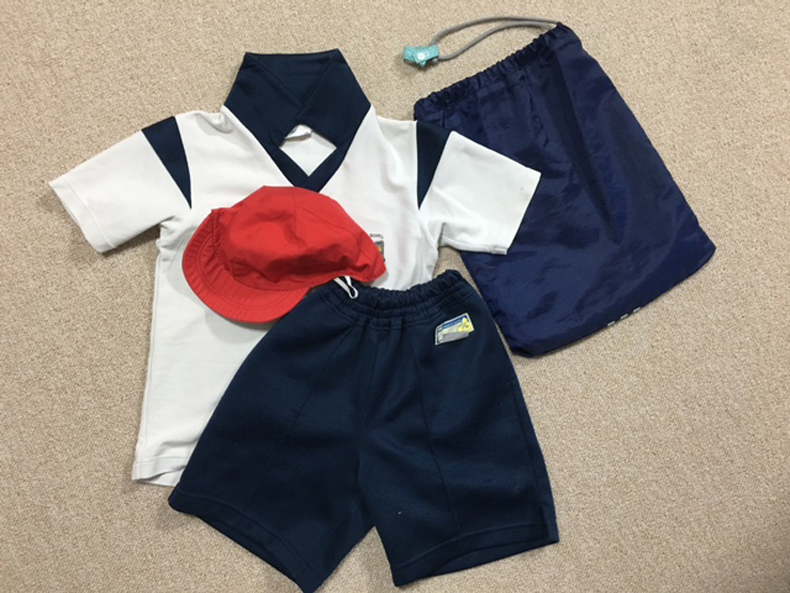
Students also require a big bag with handles called tesage-bukuro that they use to carry things home for washing on Fridays and back to school again on Mondays. Things that need to be washed are the sports uniform, uwabaki (indoor shoes), a kyuushoku (lunch) apron if your child has been responsible for serving lunch that week and occasionally the large white cover that goes over the kyuushoku cart. It is handy if the bag is also big enough to carry the dougu-bako (supplies box) that the children bring home ahead of long school holidays. That size may be bigger than the tesage-bukuro your child may have used at kindergarten. The box is designed to hold A4-size exercise books and pages and the top and bottom halves separate and are slipped inside your child’s school desk. Rough dimensions for the box would be a height of 6.5 centimeters, a width of about 23.5 centimeters and a length of 34.5 centimeters.
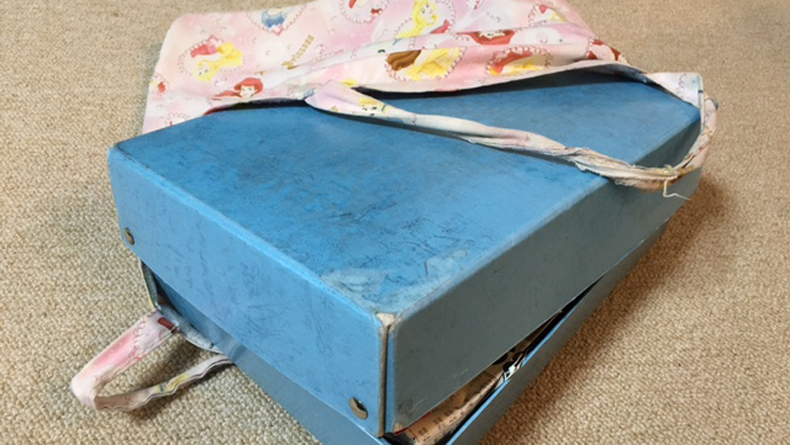
My daughter received her dougu-bako and textbooks from the school in her classroom just after the entrance ceremony. The school also distributes other school supplies to students, including exercise books, to be paid for later by parents.
School uniform
For public elementary schools here, there is no uniform except for a hat and sports uniform. A uniform supplier will probably set up shop at your local school for a few days at an appropriate time so that you can easily buy those items. You will probably also need to buy your child’s indoor shoes from the same vendor. If the school is like my daughter’s, the shoes will be not your average uwabaki but specially designed ones that are also good for running. Your child will also need a bousai-zukin (emergency-use protective hood). If she had one at kindergarten then it should be fine to keep using that one. It will need to be placed inside a cover that gets slipped onto the back of your child’s chair. Although you are welcome to make one, the supplier will sell these. It will also sell a bag to put your child’s sports uniform into, but there is usually no directive from the school regarding what type to buy, so anything will be sufficient. The same goes for the shoe bag.
The iconic Japanese school bag
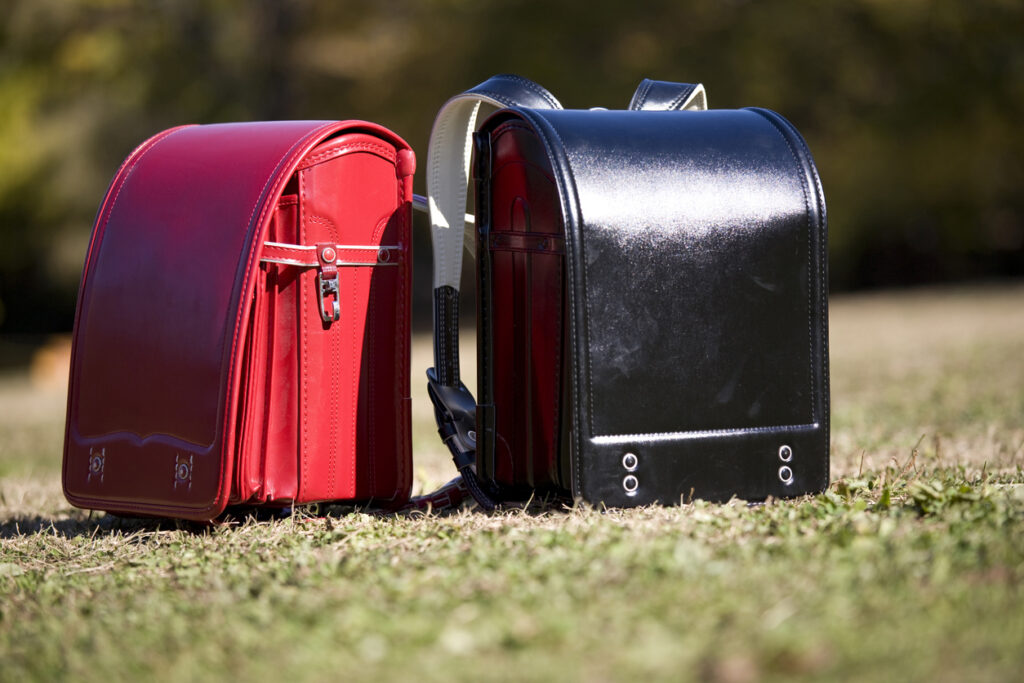 © Photo by iStock: paylessimages
© Photo by iStock: paylessimagesProbably the most iconic item for a new elementary school kid is a randoseru (Japanese backpack). Although there seems to be no requirement to use one—a regular backpack is sufficient—it is regarded as a crucial part of the rite of passage of entering a Japanese elementary school. As such, a child’s grandparents are typically more than happy to purchase one for their grandchild, or to at least help foot the bill. Since this sturdy bag will last until graduation, and your child’s preferences may change greatly during that time, be careful to not buy anything too gimmicky or juvenile.
The entrance ceremony
The afternoon after the entrance ceremony will be a busy one, with lots of information from the school to read and forms to fill out. You will also need to put your child’s name on any supplies you receive. Commercial educational-services companies, like Benesse, and pencil makers and such sometimes run special offers under which they will send you preprinted name stickers. These are great, especially as they often include stickers of all sizes, including some that fit on the tiny counters within the mathematics kit. You can buy sticker labels at 100 yen shops and write the name yourself, of course. Label writing machines are also an option but don’t seem necessary because before long your child will be writing his own name on his belongings and, with the possible exception of the start of a new school year, won’t have such a sudden influx of supplies again.
Preparation for parents
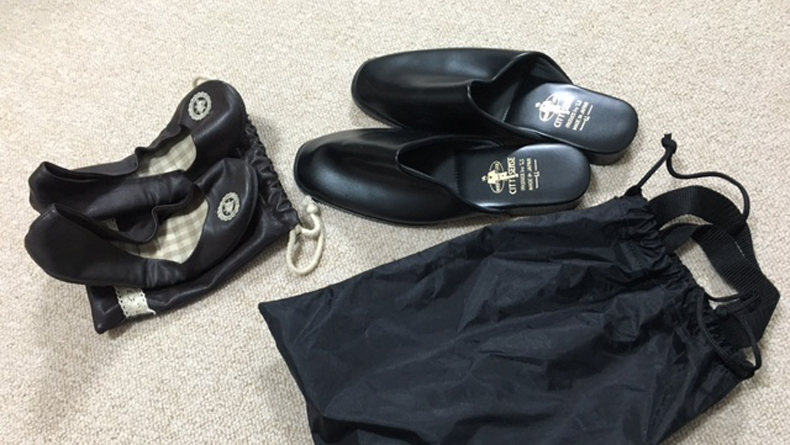
Parents will also need indoor shoes for the entrance ceremony and any other visits to the school. A lightweight, fold-up, portable pair is probably the best choice, but you will see other moms in all sorts of slippers and uwabaki. Any style of shoe is fine as long as it is kept for the intended purpose. Teachers usually wear sneakers, which may be a good option for dads. Teaming indoor sneakers with a suit for the entrance ceremony will pose no problem at all.
The entrance ceremony is an opportunity to dress up. Most boys will likely wear a collared shirt and sweater or knitted vest. Girls will go for skirts and dresses, as will most moms. A white or beige jacket or dress is considered appropriate for this happy occasion and some moms may wear a (usually artificial) corsage since they are on the side being celebrated. Outfits tailored to the occasion will be in stores in March, but you may want to get ready sooner and make the most of the January department store sales, too. Although on the somber side, the failsafe, all-purpose outfit that will even get you through entrance interviews at private or national schools is a navy blue dress or skirt ensemble with a hem that ends below the knees. Only ever buy something you feel comfortable in.
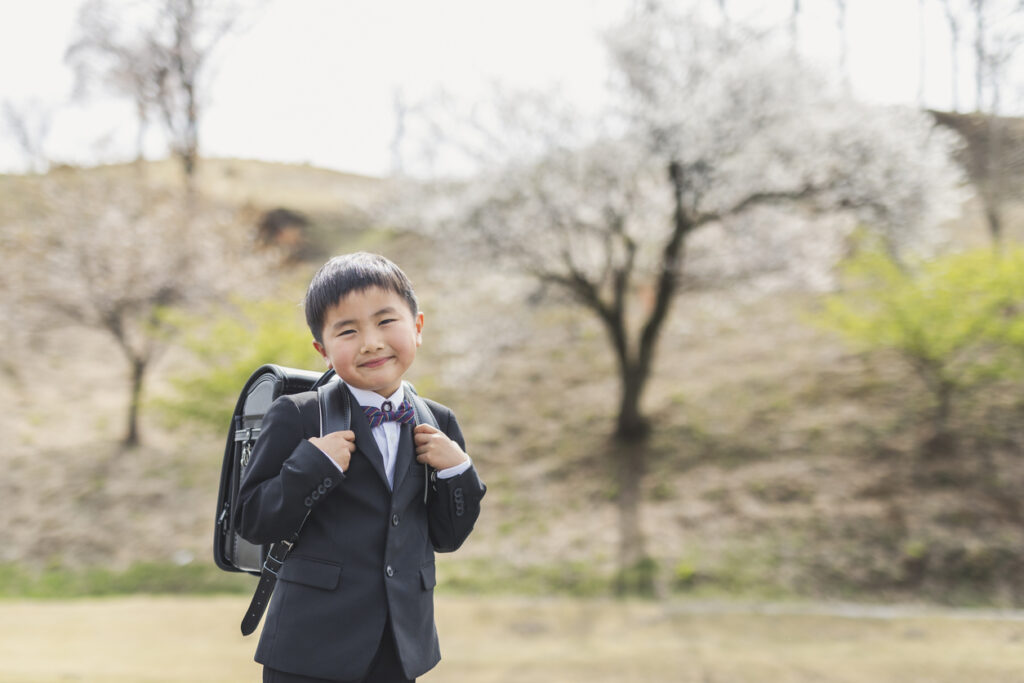 © Photo by iStock: kohei_hara
© Photo by iStock: kohei_haraYour child’s entering school is a significant and wonderful time. Many people will congratulate you and your local township may present your child with an umbrella or some other useful gift to mark the occasion. It may also be a challenging time for your child, and for you too. Stay positive, be friendly and have a sympathetic ear ready for your child as he navigates this exciting new world.
Get ready for a whole new community for you and your child to become a part of. Do you have any children beginning elementary school this year?


